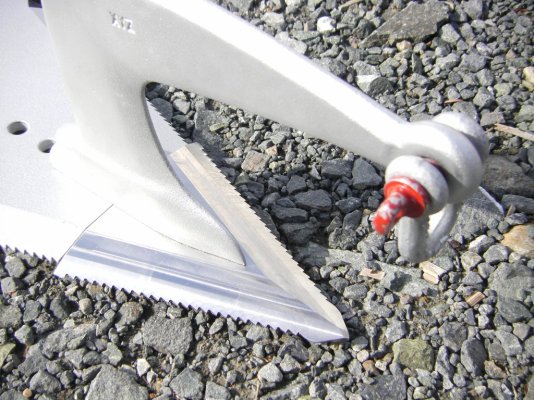Delfin
Grand Vizier
- Joined
- Jan 20, 2010
- Messages
- 3,820
Having been outed for manufacturing their product using materials that were cheaper and weaker than promised and lying to customers about it for years, Holdfast/Rocna has experienced the predictable consequences of bankruptcy.
Capitalizing on the deception, Manson has released a new product that highlights the fact that it is made in NZ and uses the steel Rocna said they used but didn't, as well as claiming to have better holding power:
http://www.superyachttimes.com/editorial/11/article/id/7476
Looks like a bit of a knockoff of the Sarca Excel, except that it is still a concave anchor, not the convex shape of the Sarca, so while I presume it will hold well, it will still tear up the seabed and still be a bit of a mud bucket.
I can't wait for Eric's report after he buys one.....

*
Capitalizing on the deception, Manson has released a new product that highlights the fact that it is made in NZ and uses the steel Rocna said they used but didn't, as well as claiming to have better holding power:
http://www.superyachttimes.com/editorial/11/article/id/7476
Looks like a bit of a knockoff of the Sarca Excel, except that it is still a concave anchor, not the convex shape of the Sarca, so while I presume it will hold well, it will still tear up the seabed and still be a bit of a mud bucket.
I can't wait for Eric's report after he buys one.....
*


